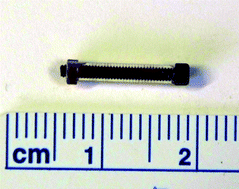Molecularly imprinted polymer stir bar sorption extraction and electrospray ionizationtandem mass spectrometry for determination of 2-aminothiazoline-4-carboxylic acid as a marker for cyanide exposure in forensic urine analysis
Abstract
In forensic casework, a stable and quantifiable marker is desirable for the determination of


 Please wait while we load your content...
Please wait while we load your content...